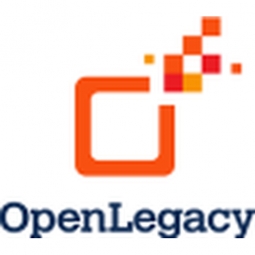Case Studies.
Add Case Study
Our Case Study database tracks 22,657 case studies in the global enterprise technology ecosystem.
Filters allow you to explore case studies quickly and efficiently.
Download Excel
Filters
-
(4)
- (2)
- (1)
- (1)
-
(2)
- (1)
- (1)
-
(1)
- (1)
-
(1)
- (1)
- (2)
- (1)
- (1)
- (1)
- (1)
- View all 5 Industries
- (2)
- (1)
- (1)
- (1)
- (2)
- (1)
- (1)
- (1)
- (1)
- View all 6 Use Cases
- (4)
- (1)
- (4)
Selected Filters

|
Citibanamex's Digital Transformation: A Mobile-First Strategy with OpenLegacy
Citibanamex, a part of Citibank corporation, was facing a challenge in keeping up with the rapidly evolving Mexican consumer banking market. The bank's primary goal was to deliver a seamless, personalized user experience across both digital and traditional channels. The bank's mobile application rating was a mere 2.0 out of 5, indicating a need for innovative digital offerings to improve the user experience. The bank's core technology stack was a proprietary mainframe system, which ran core business applications such as payments and account management. Over time, modernization projects led to an increasing spiral of complexity with various tools, mainframe gateways, ESBs, middleware, dispatchers, routers, and messaging queues. Each system had a different way of handling the backend legacy platform, making it harder and more cumbersome to integrate with legacy applications. After years of unsuccessful, costly integration attempts, Citibanamex was left with the same needs and challenges, only exacerbated. The focus shifted to the Customer Digital Experience and the End-User Journey, and they needed a partner that could help them rapidly develop and deploy innovative customer offerings on top of their core systems.
|
|
|

|
Real-Time Error Tracking and Handling in JSW's Manufacturing Plants with OpenLegacy
JSW, a multi-billion dollar company, is a key player in India’s steel, energy, cement, and infrastructure industries. The company's steel manufacturing is spread across multiple plants, each housing dozens of machines with numerous sensors tracking multiple data points and supplying event data every 2-3 seconds. This data includes field maintenance, material consumption, and machine usage. Although the data is saved in each machine’s database and transferred to the central Oracle databases, the process had significant issues. Each machine used its own data protocols, making the data transfer processes 'closed' and lacking a standard way of reporting errors. As a result, some errors went unnoticed for a long time, leading to financial losses. For instance, the production of metal with incorrect dimensions could go unnoticed, resulting in significant waste and financial loss.
|
|
|

|
AIG Enhances Customer Experience and Boosts Efficiency with OpenLegacy
AIG, one of the world's largest financial and insurance companies, faced significant challenges in delivering a seamless customer experience. Despite promoting a 'one call does it all' approach, their call center representatives had to manually enter data from their call center application into their core insurance system. Their IBM i applications, while reliable, were difficult to integrate with other systems in the technical stack. This made it nearly impossible to provide users with instant calculations of car insurance exchanges, a process that would have taken a year of development with the existing tools. This delay could potentially lead to the loss of clients and increased costs. AIG had invested heavily in streamlining their call center processes, but implementation proved challenging and the long-term approach was still far from achieving a fully online, fully digital workflow. Additionally, AIG needed a better way to pay insurance claims without redundant, monthly manual effort. The process took eight days of work every month and could not be done on the legacy system, leading to frustration and a sense of wasted time and effort for the insurance agents.
|
|
|

|
Autogrill's Supply Chain Enhancement through IoT Connectivity and Visibility
Autogrill, a multinational catering company operating in 30 countries, faced a significant challenge in providing their suppliers with direct access to their core system data. The suppliers required this access for improved visibility, analytics, and order effectiveness. Autogrill also needed better anticipation of stock levels, localized costs in each market, and additional supply chain information. The data resided in their IBM i (AS/400) and SAP systems, and accessing it in a quick, secure, and cost-effective manner without creating thousands of queries was a significant challenge. Autogrill was in search of a partner who could support them in achieving these goals and provide secure services granting real-time information from their core systems.
|
|




